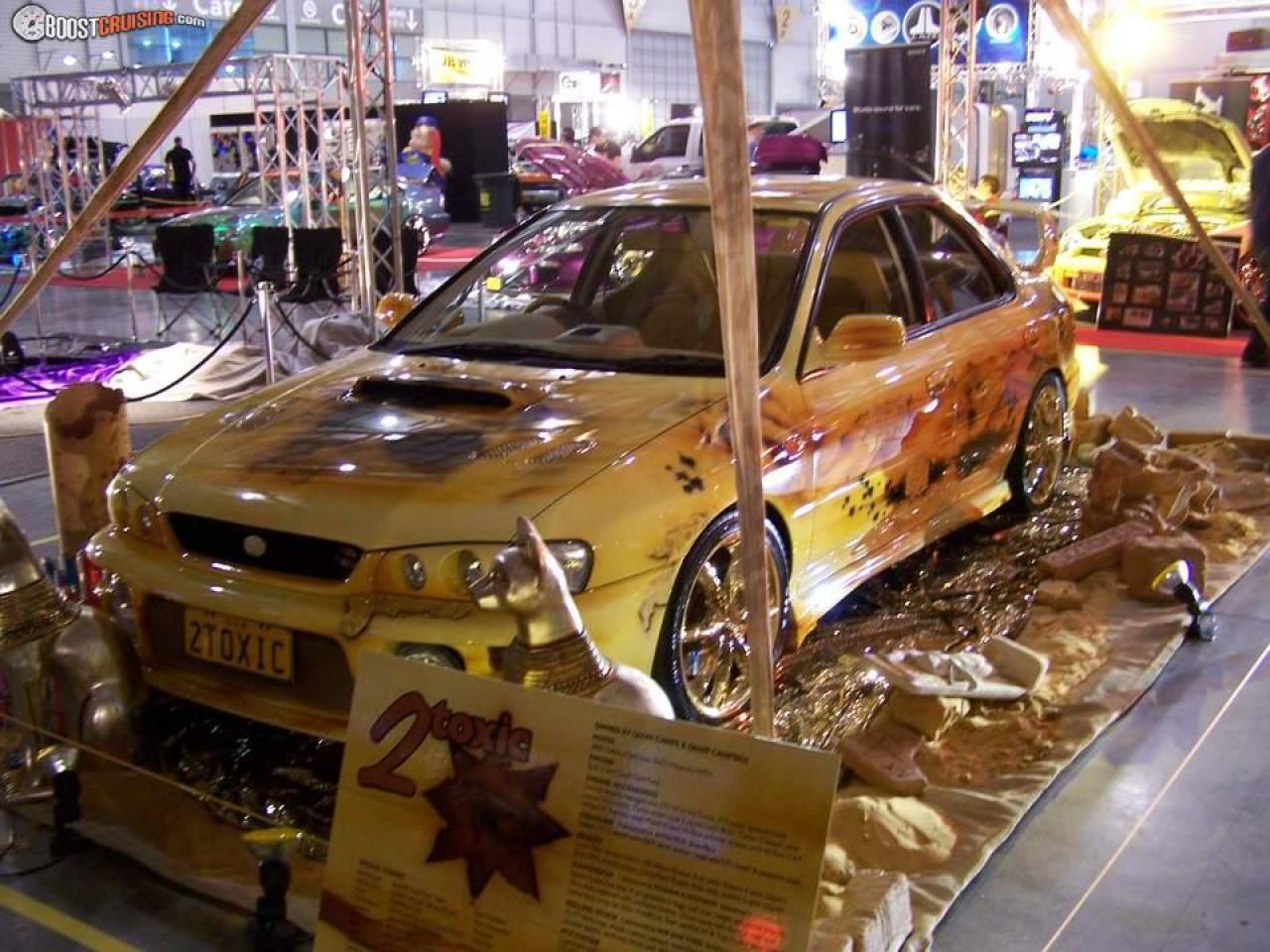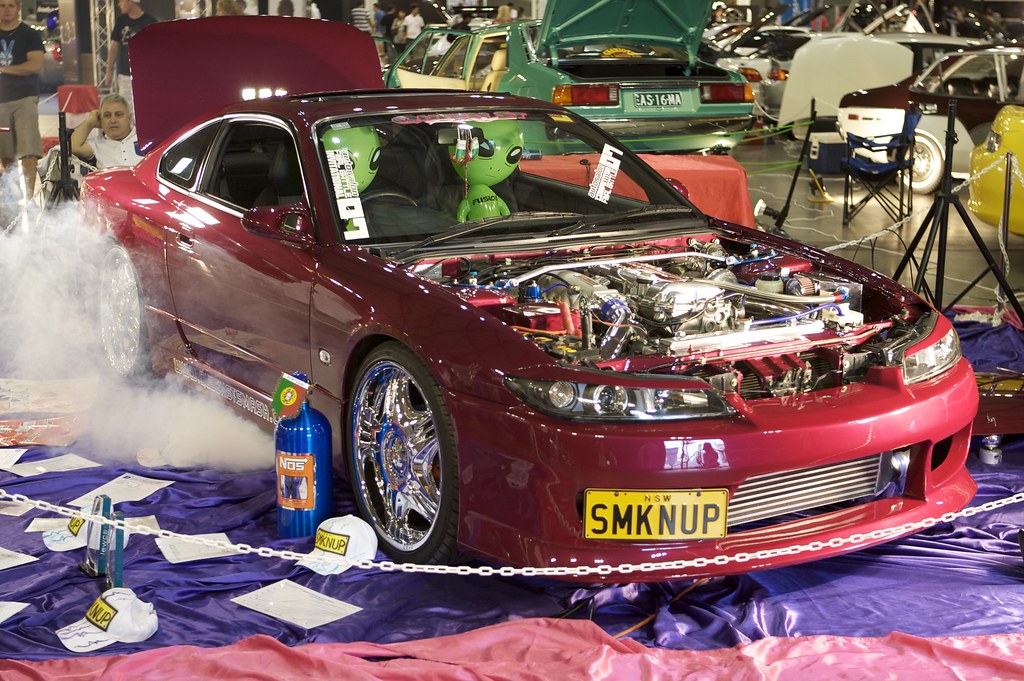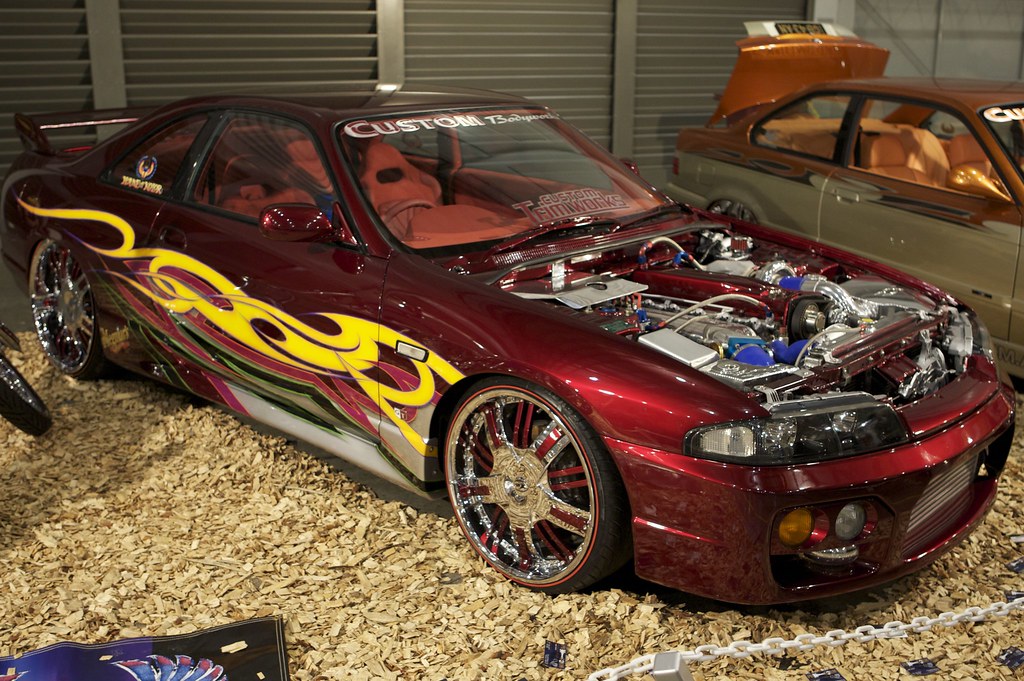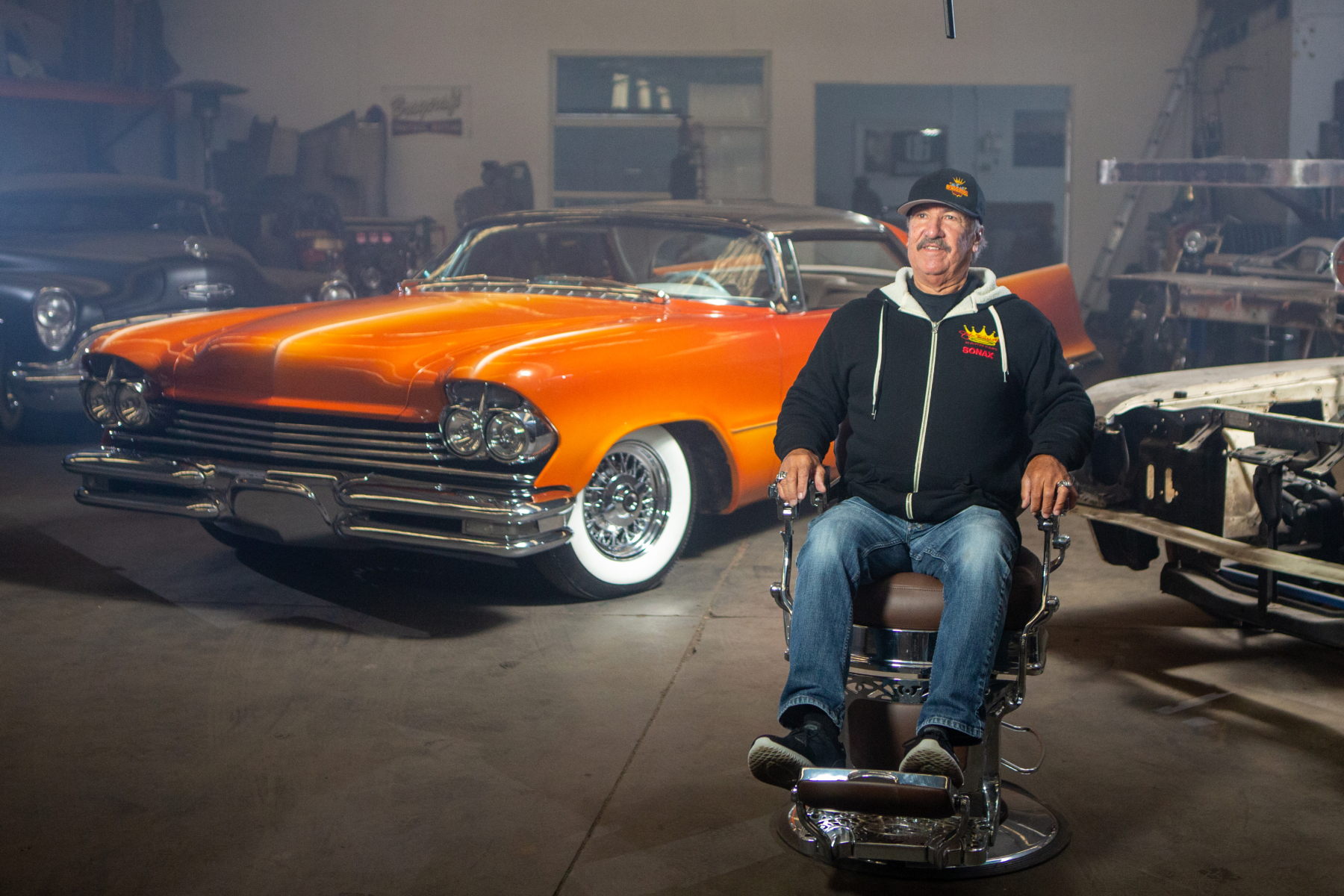

Naked women painted down the sides of near-new cars, giant chrome wheels, blow-off-valves louder than a V8 engine, video screens replacing headlights, and even goldfish being fitted as part of a booming stereo install. Welcome to the late-model car scene 20 years ago, and what has now being termed “Sex Spec”.
If you hang out on the Internet long enough you may hear of a style of modified car referred to as “Sex Spec” but what does that describe? To understand we need to look at how people modified some late-model cars in the late 20th Century and early 21st Century.
The most controversial car trend
Back to its very emergence the car scene has run in fads, just like fashion. Today we think of Japanese and European cars of the 90s and 00s from the more race-inspired “JDM” style of tuning with a far more serious performance focus, but the truth is this style grew up as the antithesis to the more popular Sex Spec style of car build.
From the late-1990s through to approximately 2010 there was a hugely popular car scene filled with young people modifying four-cylinder, late-model, and import cars with wild airbrushing, luridly paint jobs, huge chrome wheels, retrimmed leather interiors, insane sound systems, and jutting bodykits that emphasised drama over actual downforce.
Sex Spec was controversial for its unashamedly over-the-top presence, sitting next to traditional cars shows with the cocky swagger of youth. Initially most people building Sex Spec cars didn’t care for performance so long as their subs rattled windows three suburbs over, and their car was brighter than the one next to them at Maccanats.
It’s important to note the term “Sex Spec” is really only a recent invention, stemming from people struggling to name this style of modified car. Ultimately it came down to an understanding that many of the people building these show cars were chasing attention from the opposite sex so, if it wasn’t “race-spec” then it was “Sex Spec”.


Where did it come from?
In 1990s Australia the bulk of our car scene was pretty much either represented by traditional classic cars (Jags, MGs, and the like), V8 street machines (including muscle cars, hot rods and the like), or “small fours” which included small-capacity Japanese and European cars like Suzuki Swift GTis, Holden Geminis, Mazda rotaries, Ford Escorts and the odd Fiat and Alfa Romeo.
In the 80s these cars were being modified in the same style as the V8s, but through the 90s people started modifying newer cars which got more bolt-on parts rather than restoration-style builds. Slammed suspension, flashy chrome wheels and low-profile tyres, bright paint jobs, and booming sound systems were the new hot tickets.
Following the influence of the Hot Import Nights shows from America and the UK’s Max Power Magazine-style of tuning, bodykits started turning into huge race-inspired fibreglass monsters, with towering wings and scraping chin spoilers. It became a key part of youth culture in the 90s, along with electronic dance music and internet forums.
Everything old is new again
These cars found a huge audience because they’re highly entertaining to look at, but the core ideas and styling elements were just another chapter in the history of modified cars, following 1950s custom cars, or 70s panel vans and street rods. Every generation has a car styling fad that grows out of a niche and into a ludicrous, over-the-top, caricature of the original style.
The land speed-blasting hot rods of the 50s roaring across dry lakes gave way to finely detailed show rods of the 60s and then the mild, cruiser-spec street rods of the 70s. In Australia panel vans started off as work trucks and surfing rigs, but soon copped wild paint jobs, crushed velvet retrims (with bar fridges, water beds and more!), engine swaps, and even aftermarket bodywork. Soon they were often no longer fit for being used to haul timber or drive down dirt roads to quiet surfing spots.

An international sensation
One Sydney car club, the Cabin Boys, started organising shows, which led to the formation of the Cabin Group to run Australia’s Auto Salon show series.
Auto Salon ended up being the rallying point for these wild-looking late-model modified cars, with shows in every state adding up to a national championship decided at the Final Battle each year. The winner of each Auto Salon, called the King of Auto Salon, would battle it out at the Final Battle show for a chance to be named the God of Auto Salon for that year.
At Auto Salon shows the cars would get points for modifications, and this led to builders creating mind-blowingly intricate displays for utterly insane vehicles – how about a single-seat centre-drive WRX convertible with nearly 500kW? You could see that at Auto Salon.
The scene got so big Auto Salon even launched its own magazine. It was pure entertainment focused on wowing people who were on the fringe of the car scene. And boy was it entertaining. From the late 1990s until around 2007-08, when the subtler JDM style really took over, the crazy Auto Salon style cars were everywhere and at every show, no doubt helped by the impact of the Fast & Furious movies.
How it inspired Fast & Furious
The Auto Salon and small four scene was bubbling away nicely by the turn of the 21st Century but what really kicked it all into high-gear was a little movie from 2001 called The Fast & The Furious. This smash hit opened up a new, exciting part of the car scene to millions of people who didn’t care about old cars or V8s, and the movies still influence car modifying to this day.
That first movie, about a bunch of street racers who hijacked DVD-players from trucks, presented a Hollywood-ised view of the American late-model car scene. But the Hot Import Nights and Auto Salon shows were loud, bright, exciting spectacles which presented the perfect backdrop to what is actually a fairly formulaic story about an undercover cop trying to stop some robbers.

So, what happened?
As with all fashion and trends, nothing stays the same. As people got used to seeing the increasingly-ludicrous car builds there was a growing appreciation for milder-looking cars, and different styles.
While people are still building cars today with chrome wheels, airbrushing and huge bodykits, by 2007 there was a burgeoning appreciation for the more useable, faster and milder-looking JDM styling trends.
Today, as many of the original Auto Salon competitors hit middle age and look to relive their youth there is a huge amount of nostalgia for those heady, candy-painted years.

